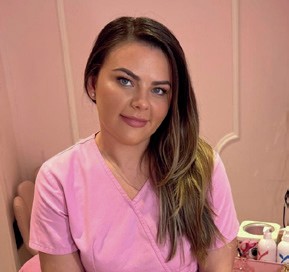BUSINESS TIPS
Ask the Experts
Our beauty experts answer your questions about every aspect of running a salon or spa business
How can I help clients achieve the perfect summer wax by starting during winter?
You might have heard fitness fanatics talking about summer bodies being made in the winter. Well, a similar idea applies to your intimate waxing regimes. If your clients start their waxing journey this winter, their bikini body will be flawless by summer.
Here’s why:
Hair growth cycles
When clients come in for their first wax, they’ll have been growing their hair for a few weeks, and you’ll be able to wax all of the visible hair and remove the roots. However, under the surface of the skin there will already be hair at a different stage in the growth cycle and these will be the first hairs clients notice when they start to see regrowth.
Once the client has reasonable regrowth (four to five weeks after their first wax), they can book their second appointment. At that appointment, you can wax the hairs that were sitting under the skin as well as the hairs that have regrown after the first appointment.
By the third or fourth wax, the hair will be growing in the same cycle, and you’ll be able to remove all hair. Now that the hair is growing in the same cycle, the waxing treatment will result in optimum smoothness and more time in between regrowth.
Thinner hair over time
After the client’s second or third appointment, they should be able to see a visible difference in the thickness of the hair and the amount of hair that grows back. This is the sort of reduction we want before we get to summer.
Whatever the client’s plans, once the weather perks up, it’ll be unlikely they’ll be caught short because even up to a few days before their appointment, the amount and thickness of hair wouldn’t be enough to stop them wearing even the most daring of bikinis.
Stretched to six-week appointments
After the client’s third visit, the results will speak for themselves and if they’re happy to, the appointments can be stretched to six weeks before they return. This means clients are covered if they’re going on an extra-long holiday or even going on two trips one after the other.
In summary, if clients have two to three waxing appointments before the nice weather starts next spring, they’ll already have less hair, it’ll be thinner, and the regrowth will take six weeks before it needs waxing again; the most low-maintenance form of self-care!

Jessica McLeay is a waxing expert based in Doll Beauty HQ and Mane in Chester. Also known as Dr Wax, McLeay has 13 years’ industry experience and is a Lycon wax specialist.
How should I prepare for a trade test?
A trade test is used to test your practical ability and to gauge your skill set following a successful verbal interview. Not only will it allow your potential employer to get to know you better, it’s also your opportunity to showcase yourself and your skills.
First impressions are important, so arriving early, dressing smartly, and having that all-important smile and confidence will start your interview and trade test on the right foot. This is your opportunity to impress and stand out from the crowd, so make sure you arrive with some time to spare – you don’t want to be rushing in the door all flustered; you want to be calm, relaxed and ready for your test.
Make sure you arrive looking professional, exactly as you would for a day at the salon. Wear a clean, smart uniform and appropriate shoes, have short nails, natural-looking make-up and your hair neatly out of your face.
Treat the trade test as a real client experience and remember to communicate with the client/interviewer, ask questions, make eye contact, explain what you are going to do during the treatment and check for client comfort throughout.
All the personal touches that you bring to the test will help you stand out from your competition – things like asking them if they have any areas of tension and what pressure they like before you start your massage, holding their hand confidently when you paint their nails, and listening to what they want and taking it on board.
You will generally be asked to carry out a few treatments to demonstrate how competent your skill set is. This will vary from salon to salon, but they will usually ask you to perform a wax, back, neck and shoulder massage and a nail polish, usually with a dark colour or a French tip. You can ask prior to the trade test what will be included so you feel prepared before you arrive.
Make sure your interviewer is aware of your knowledge of the treatment you are performing. Use the correct names of muscles; explain how the treatment is going to help them, make sure the temperature of the wax is comfortable, and so on. Clients like knowledgeable therapists and employers want people who understand what they are doing. The employer will expect you to be nervous so don’t worry, but try to relax, appear confident and keep calm.
Finally, once you have performed all your treatments, don’t forget the aftercare. You are treating this as a real client experience so make sure you offer a glass of water, recommend follow-on treatments and products to help and let them know when they need to book in for their next treatment. Most importantly, be yourself, show your personality and professionalism and enjoy your trade test.

Bonnie Platts is co-director of AB Beauty Recruitment and Consultancy. She has worked in the beauty industry for over 20 years, starting out as a therapist before setting up her own business.
How can I achieve better pigment retention in my SPMU services?
Achieving the best possible pigment retention is crucial for semi-permanent make-up artists to ensure long-lasting and satisfactory results for their clients. Great results, time and time again, mean more happy clients and at the end of the day that is what all SPMU artists want.
Tips to help you achieve optimal pigment retention:
1. Quality pigments: Use high-quality, reputable pigments that are specifically designed for semi-permanent make-up. Choose pigments that are free from heavy metals and other impurities and have a proven track record for both safety and in vivo stability.
2. Proper education: Comprehensive training from a reputable institution is a must so that you fully understand the skin’s anatomy, different skin types, and the correct techniques for applying pigments.
3. Sterile products and aseptic environment: Maintain a clean workspace and use sterile single-use tools whenever possible to prevent cross-contamination and infection.
4. Skin preparation: Prepare the client’s skin by cleansing and exfoliating the area to remove any oils, dead skin cells and make-up. A clean and slightly dehydrated canvas will allow for better pigment absorption.
5. Proper depth: Deliver pigment to the correct skin depth. Shallow implantation can lead to premature fading, while too deep may give an unnatural appearance.
6. Needle selection: Choose appropriate needle configurations and sizes for different procedures. Fine needles are mostly used for precise techniques such as hair strokes or lip contour; larger needle configurations are used for lip blush or ombré brows.
7. Gentle technique: Use a gentle and controlled movement to minimise skin trauma. Avoid overworking the area, as this can lead to prolonged healing and pigment loss.
8. Aftercare: Provide clients with clear aftercare instructions. Highlight the importance of following these closely, as how they look after their fresh SPMU at home is part of the success.
You perform a great job at the salon, and they need to do their part at home to guarantee best healed results. Remember, aftercare should be treatment specific and correctly matched to their skin type.
9. Touch-ups: Schedule follow-up appointments for touch-ups as needed. Some clients may require multiple sessions to achieve the desired results.
10. Stay informed: Keep up with the latest techniques, pigments and tools by attending workshops, seminars, and staying connected with industry professionals.
11. Keep records: Maintain a comprehensive record of each client’s procedure, including pigment used, needle selection, technique performed and any concerns. This will help you refine or adjust the techniques over time.

Monika Ludwiczak is the co-founder and senior educator at microblading and semi-permanent make-up brand Everlasting Brows.